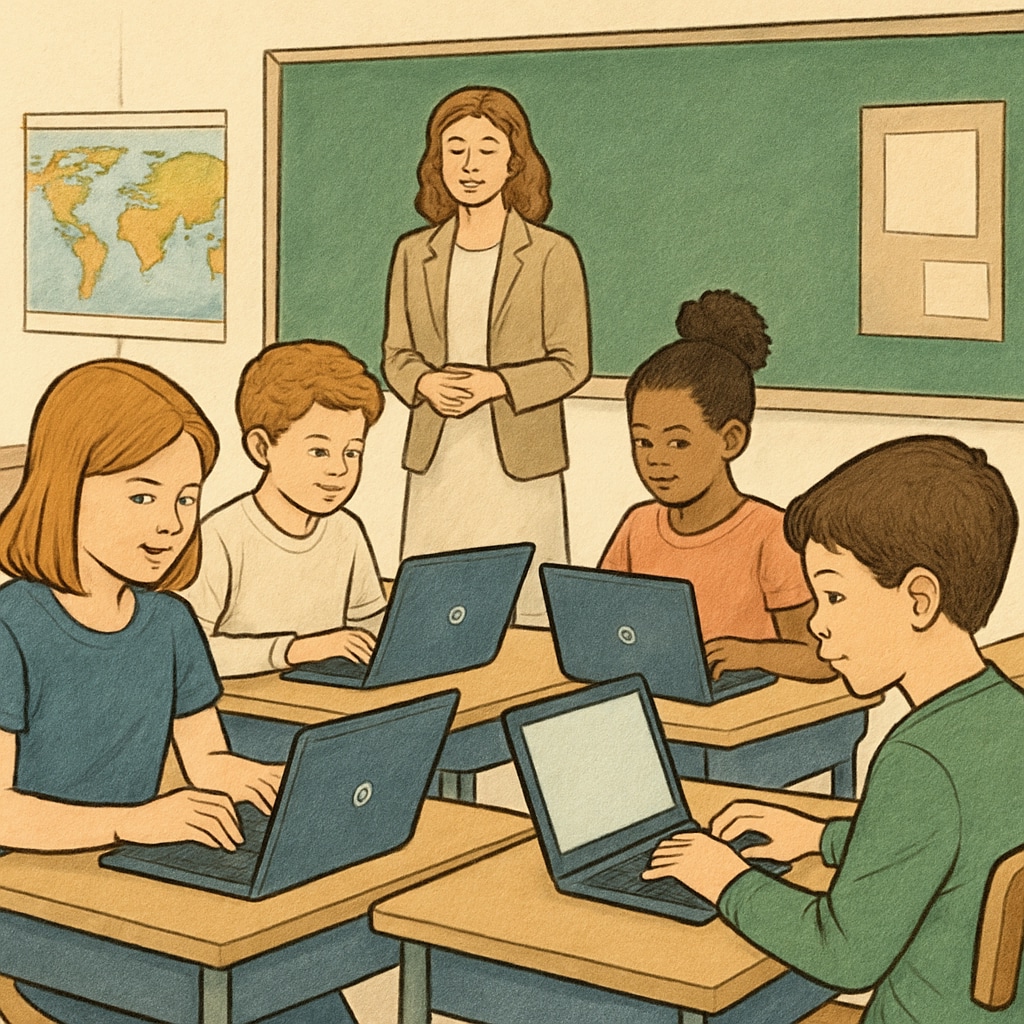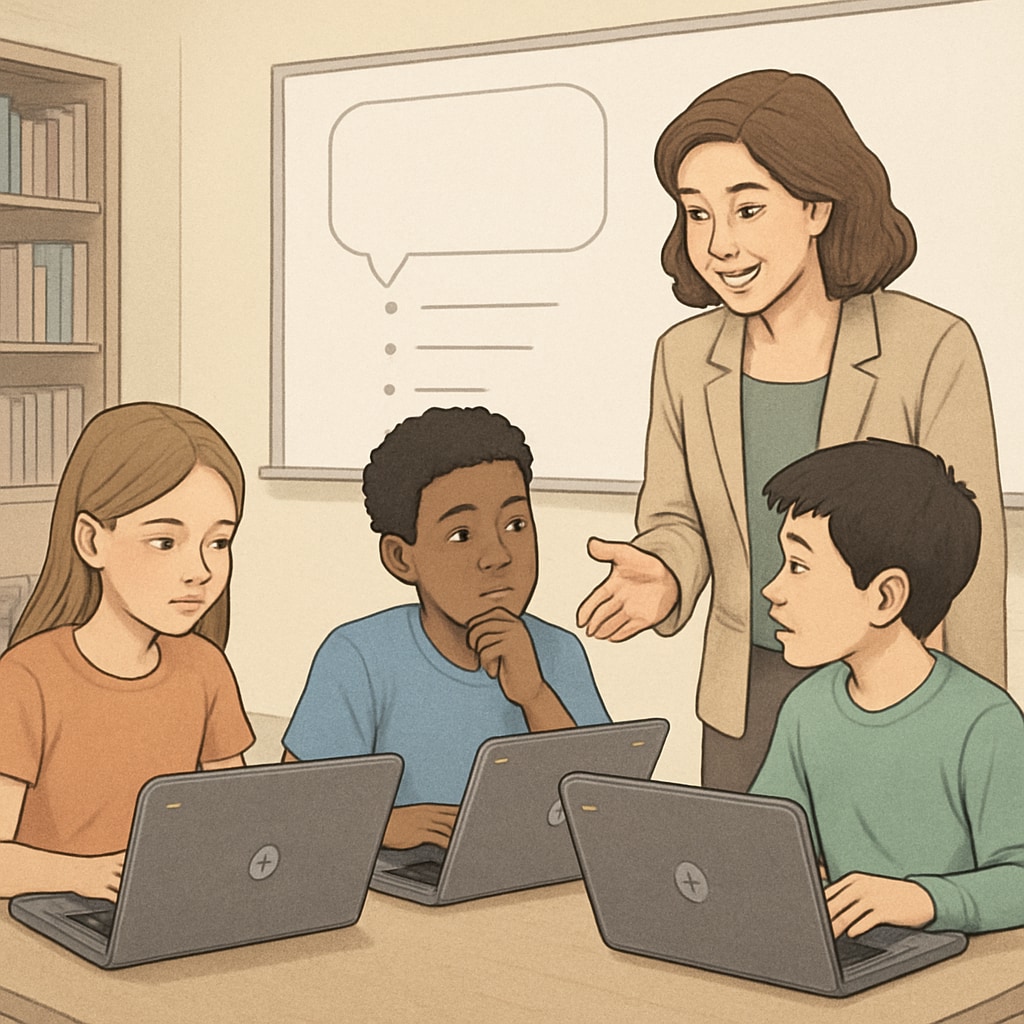As education technology, including Chromebooks, becomes a staple in classrooms, schools are embracing the efficiency these tools bring. Yet, this growing reliance on digital platforms raises a pressing question: Are we sacrificing critical thinking and curiosity for the sake of convenience? While technology enhances access to information and streamlines learning, it may also unintentionally diminish students’ ability to engage deeply with complex ideas. This article examines the intricate relationship between technology’s role in education and the development of critical thinking skills.

Are Efficiency and Depth Mutually Exclusive?
One of the most significant advantages of education technology is its ability to enhance efficiency. Tools like Chromebooks allow students to quickly access information, complete assignments, and collaborate with peers. For teachers, these platforms simplify grading, lesson planning, and communication. However, this focus on efficiency can overshadow the need for deeper cognitive engagement.
Critical thinking—the ability to analyze, evaluate, and synthesize information—is not just a skill; it is the foundation of lifelong learning. For example, when students rely on search engines to find quick answers, they may bypass the process of questioning, reasoning, and exploring alternative perspectives. This “shortcut culture” can undermine their intellectual curiosity and problem-solving abilities.
According to a study by the Encyclopedia Britannica, critical thinking entails active engagement with content, not passive consumption. The challenge lies in designing educational experiences that balance the convenience of technology with the need for intellectual rigor.
The Role of Chromebooks in Modern Classrooms
Chromebooks have become synonymous with digital learning in K-12 education. Their affordability, user-friendly design, and seamless integration with cloud-based tools make them a popular choice for schools. However, their widespread adoption raises concerns about over-reliance on technology at the expense of cognitive skills.
For instance, many learning applications prioritize rote memorization and standardized testing over exploratory learning. While these tools are excellent for reinforcing basic concepts, they often fail to encourage students to ask “why” or “how.” Additionally, the constant availability of distractions—such as notifications and gaming apps—can further erode focus and critical engagement.
To counteract these trends, educators must intentionally structure lessons that integrate technology with thought-provoking activities. For example, teachers can assign projects that require students to synthesize information from multiple sources or engage in debates on complex topics. These practices can help bridge the gap between digital efficiency and cognitive depth.

Strategies for Balancing Technology and Critical Thinking
While the tension between technology and cognitive development is undeniable, it is not insurmountable. Schools and educators can adopt several strategies to ensure that students benefit from the best of both worlds:
- Incorporate Open-Ended Questions: Design assignments that require students to explain their reasoning, evaluate different viewpoints, or propose creative solutions.
- Limit Passive Consumption: Encourage students to interact actively with digital content, such as by annotating articles, creating mind maps, or participating in online discussions.
- Blend Digital and Analog Tools: Balance screen time with hands-on activities, such as group discussions, experiments, and artistic projects, to stimulate different modes of thinking.
- Teach Digital Literacy: Help students critically evaluate online information, distinguish credible sources, and understand the algorithms shaping their search results.
By implementing these practices, educators can transform Chromebooks and other digital tools from mere efficiency boosters into catalysts for deeper learning.
Looking Ahead: The Future of Education Technology
As education technology evolves, the conversation must shift from “how much tech” to “what kind of tech.” Policymakers, administrators, and teachers need to prioritize tools and platforms that foster critical thinking and creativity. For example, programs that simulate real-world problem-solving or encourage interdisciplinary learning can better align with long-term educational goals.
Moreover, professional development for educators is crucial. Teachers need training in designing lessons that integrate technology without compromising intellectual rigor. Organizations like the International Society for Technology in Education (ISTE) offer valuable resources for bridging this gap.
Ultimately, the goal is not to reject technology but to use it thoughtfully. By balancing efficiency with depth, we can prepare students not just for tests, but for the complexities of the real world.
Readability guidance: The article maintains concise paragraphs, incorporates lists to summarize key points, and uses transitional words (e.g., however, for instance, moreover) to ensure smooth flow. Passive voice is minimized, and technical terms are clearly explained where necessary.


